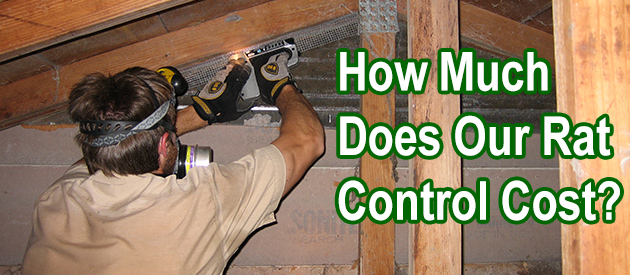Muscogee County, Columbus Rat Control Situation:
Hello David. We live in Georgia in a double-wide mobile home, & are having a problem with rats underneath in our insulation. A few years ago, my daughter lived in our mobile, & when we moved back in, we discovered that, because of her habits of leaving food & garbage around, our house was terribly infested with roaches, & that we also had rats in the house. After trying lots of roach traps & sprays, we still had roaches, & finally got rid of them with boric acid. Now we turned our attention to the rats. My husband came home with poison & snap traps, but because of fear for my pets, & also not wanting to kill them because I keep pet rats, I bought a humane trap. Well, we caught a couple of babies, but because I tried to transfer them to another container so I could catch more before trying to release them, they escaped, & then they became too leary of the trap, so we caught no more. Then I bought an electronic zapper, which does kill them quickly, but only one at a time, but it seemed to have gotten them out of the house, that & cleaning up food messes. Now we are having a problem again. I have them in a small travel trailer, & also in the insulation under our mobile home. They must also be in the walls because I found droppings coming out of the crack between my tub & shower wall. Since there are many openings in the skirting, it is easy for them to come & go, & even if we were to fix the skirting, I'm sure they would find a way in. It is very difficult to go under the mobile because it is not very high, & you have to snake crawl most of it, & a lot of the insulation is torn down. Another problem is money. In these difficult times, money is very scarce, so we don't have hundreds of dollars to pay a pro. Treating this problem in a mobile home is a lot different then treating an attic. Do you have any suggestions as to how we can handle this problem?
Columbus Rat Control Tip of The Week
Is One Rat A Sign That There Are More Present?
Rats are animals that tend to move around in groups, they are not solitary animals. For this reason, if you see a rat in your home, it is a sign that there are more rodents present. It is imperative that you start radical extermination as soon as possible, avoiding their reproduction.
In addition to traveling in groups, they have a very rapid reproduction capacity, especially if they find a comfortable place in your home.
How To Know If There Are Rats In Your House?
If you have seen or heard a rat in your home, there are probably more hidden in the most unexpected corners of your house. There are many ways you can tell if there are rodents in your home, even if you don't see them. For example:
Unusual Sounds: Rats are noisy animals; they can make noise at night, or even during the day. Whenever they bump into things, chew on objects or food, and move from one side of the house to the other, you will hear them
Nibbled Food And Objects: The best sign that there are rats in your house is if you find nibbled objects, such as clothes, shoes, or bags. Similarly, finding food packaging with holes or even foods with bites is a sign of rodents in the house.
Droppings And Urine: Rats will usually leave them anywhere in the house. It is important to be aware of any sighting of excrement, which can be quite small (the size of a grain of rice).
Where Do These Rodents Usually Hide?
Rats will always look for a place that provides them with safety and food. They usually hide in small spaces, as it is easier for them to move from one place to another. They will probably decide to stay in a place close to the kitchen so that it is easier to go out in search of food for their pups.
In short, seeing a rat is a sign that more are present and hidden. Don't wait a minute to take action in this situation! The last thing you want is a plague of rats living inside the walls of your home.


